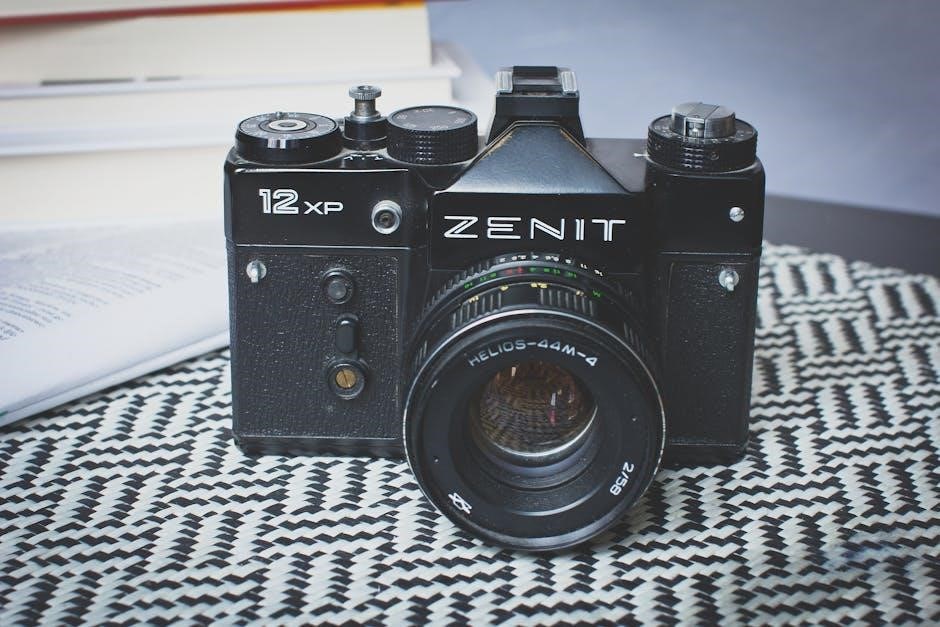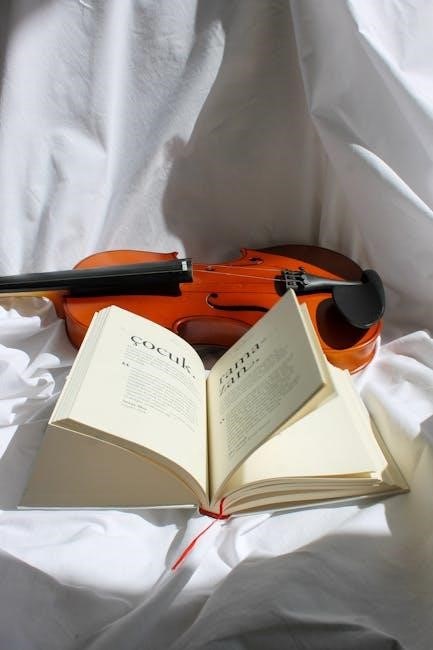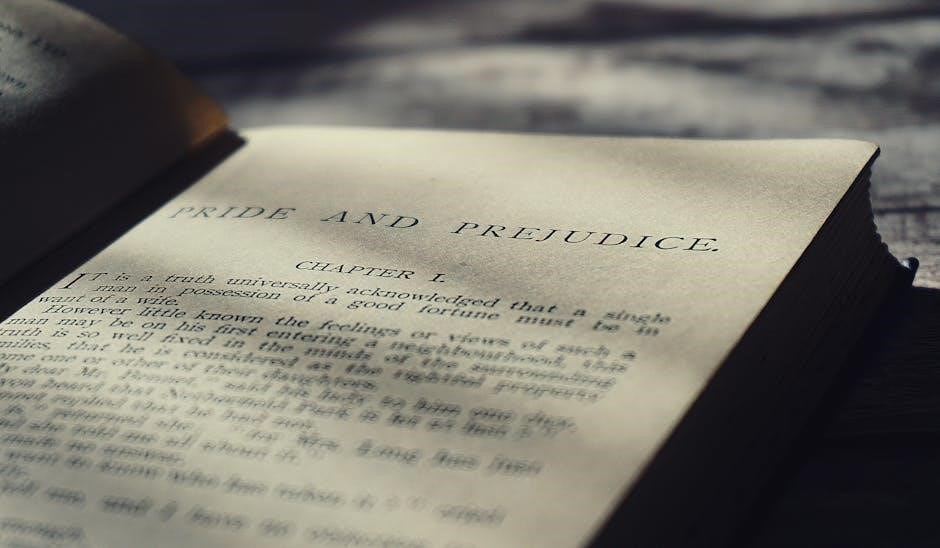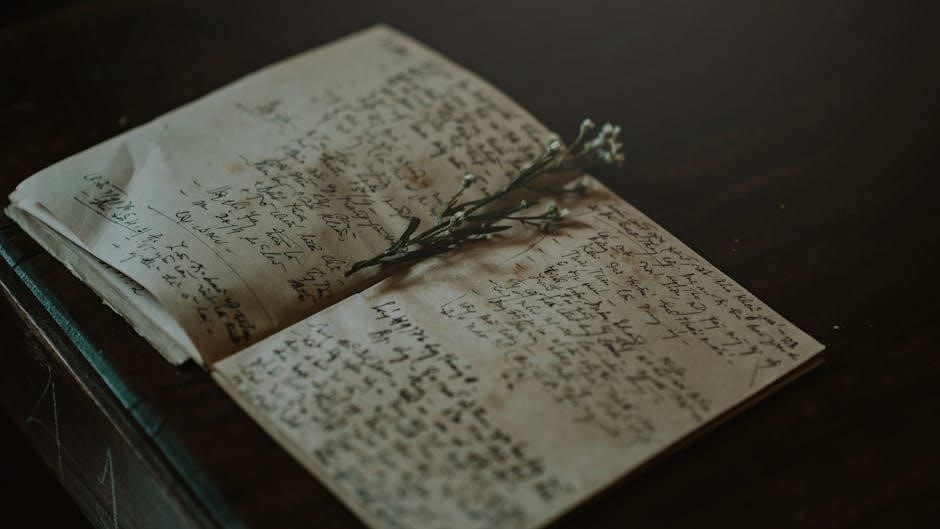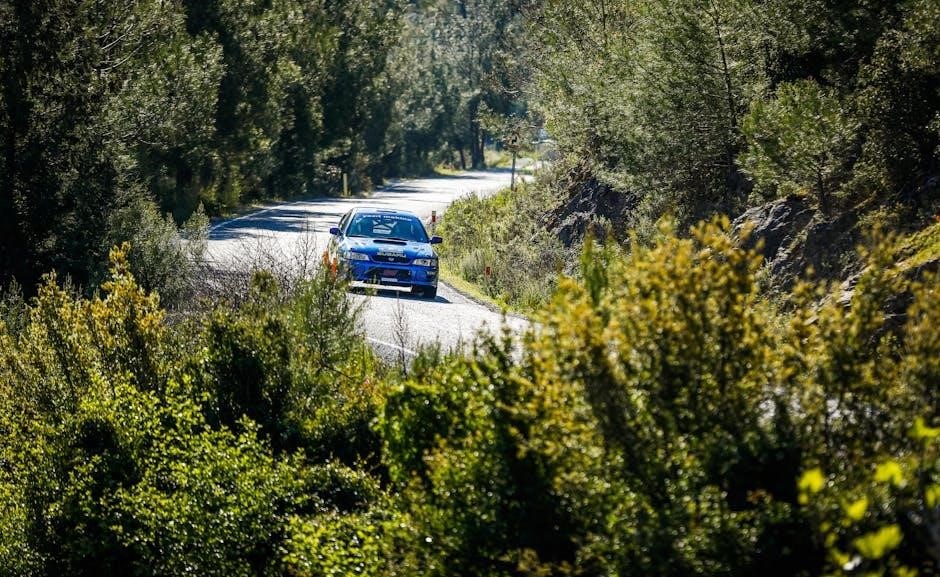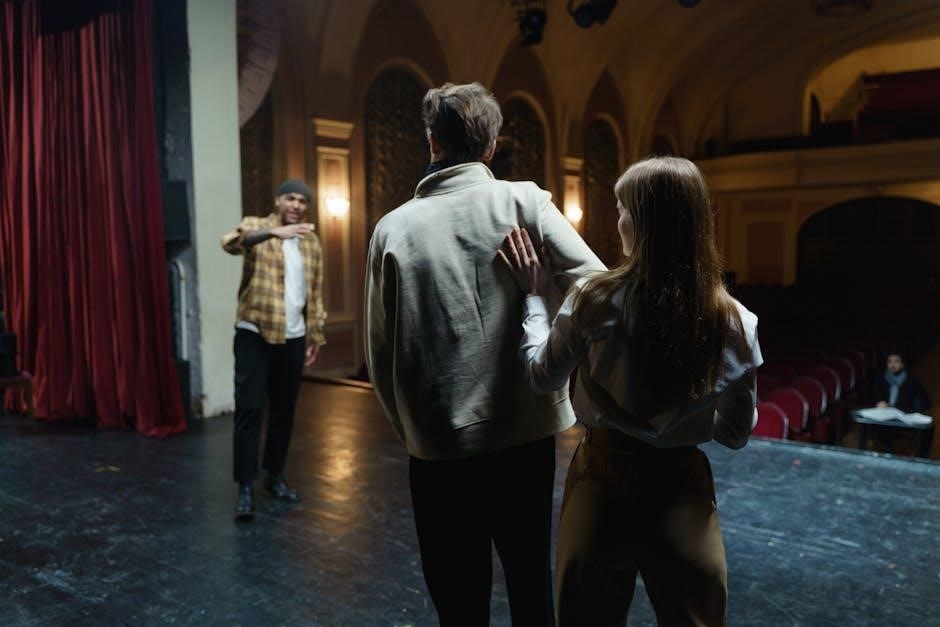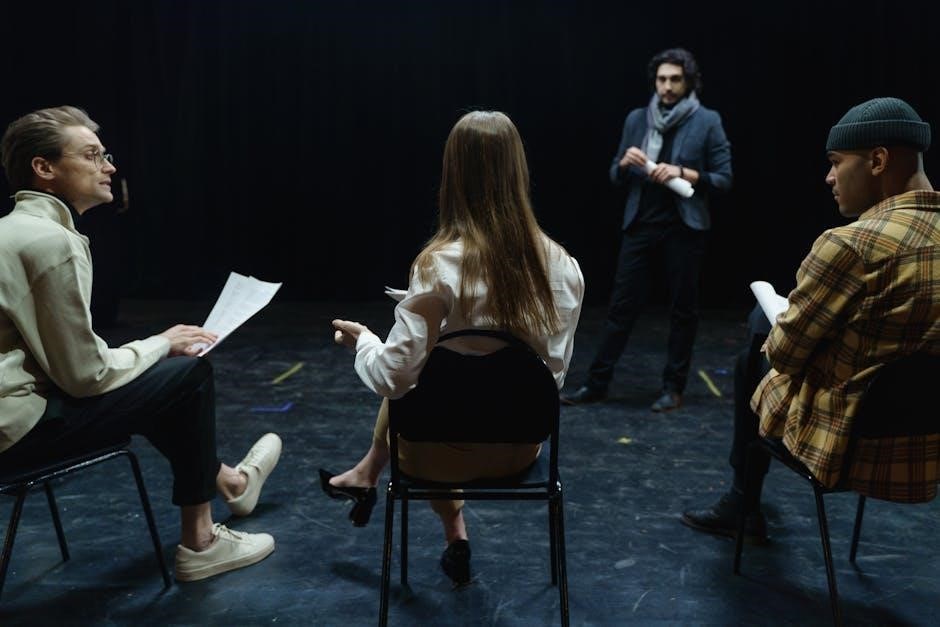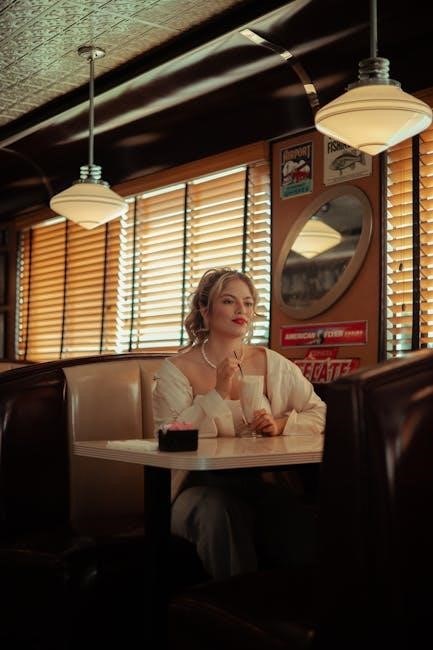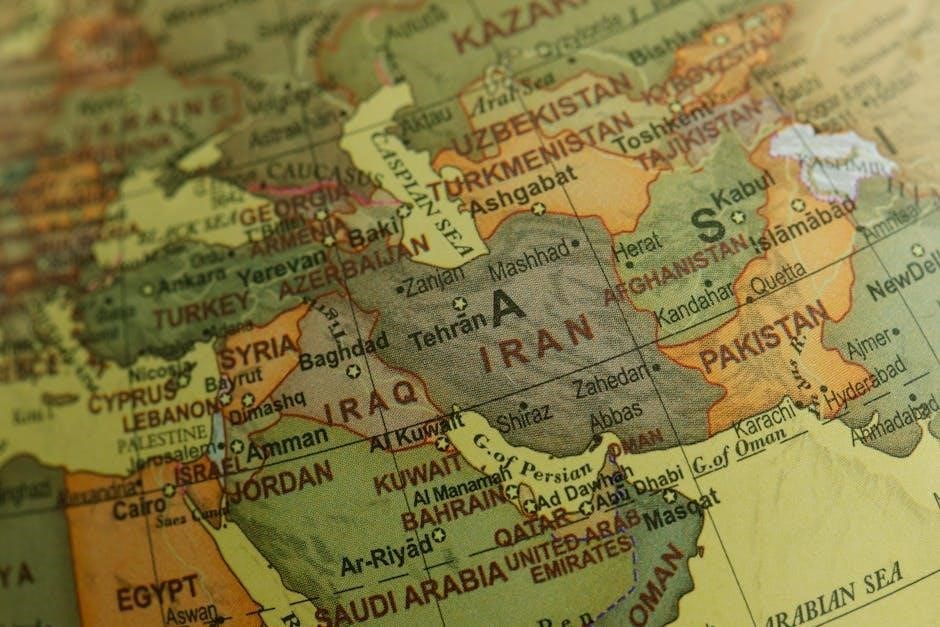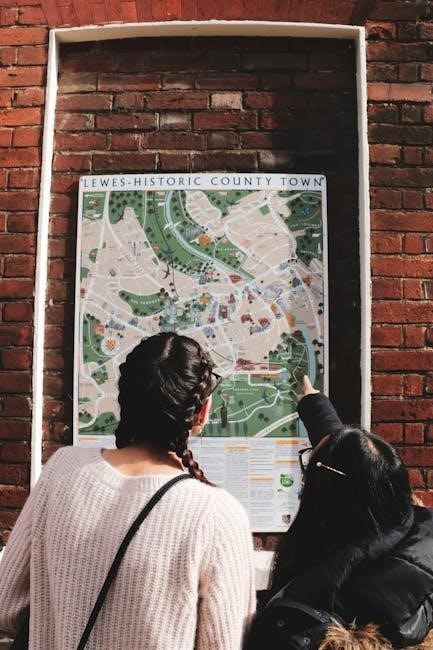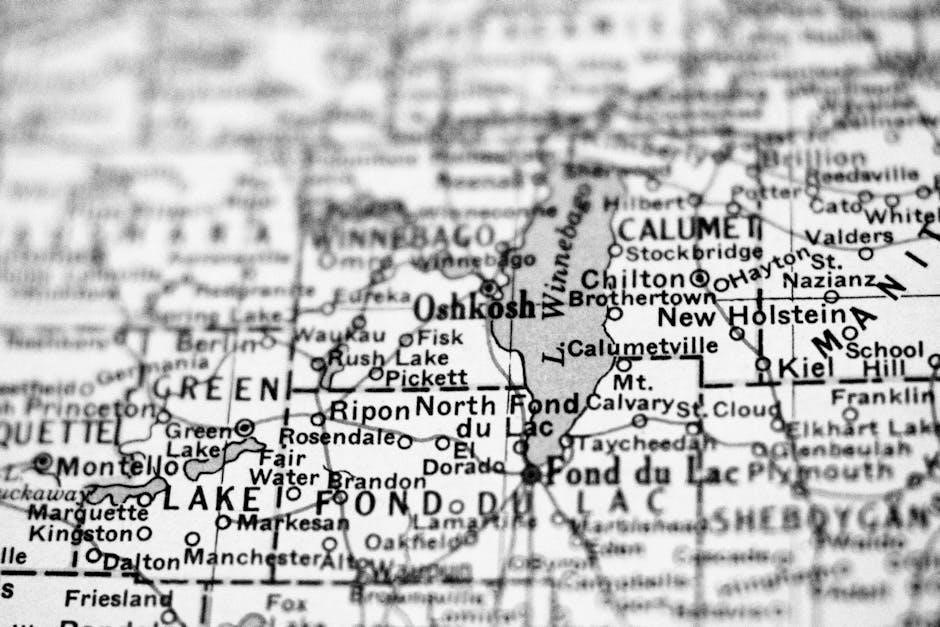Maus, a groundbreaking graphic novel by Art Spiegelman, won the Pulitzer Prize; Serialized in Raw magazine from 1980–1991, it was published as two volumes, exploring the Holocaust through animal symbolism and family dynamics․
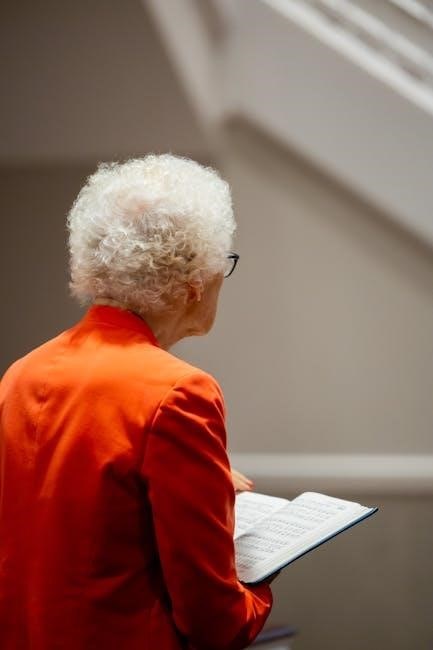
1․1 Overview of the Book
Maus, a graphic novel by Art Spiegelman, recounts the Holocaust experiences of Vladek Spiegelman, a Polish Jew and survivor, through his son Artie’s narrative․ Serialized in Raw magazine from 1980 to 1991, it was later published as two volumes: Maus I: My Father Bleeds History (1986) and Maus II: And Here My Troubles Began (1991)․ The complete edition, released in 1996, blends historical trauma with family dynamics, using anthropomorphic animals—Jews as mice, Nazis as cats—to explore identity, race, and generational trauma․ The book is widely acclaimed for its layered storytelling and emotional depth, making it a seminal work in graphic literature․
1․2 Historical Context and Significance

Maus, set against the backdrop of World War II and the Holocaust, offers a unique perspective on one of history’s darkest periods․ By depicting Jews as mice and Nazis as cats, Art Spiegelman uses animal metaphors to explore themes of identity, race, and survival․ The graphic novel not only chronicles Vladek Spiegelman’s harrowing experiences but also examines the intergenerational trauma passed down to his son, Artie․ Maus is celebrated for its innovative storytelling and its ability to make the Holocaust accessible while maintaining historical authenticity, earning it a place as a vital work in Holocaust literature and education․
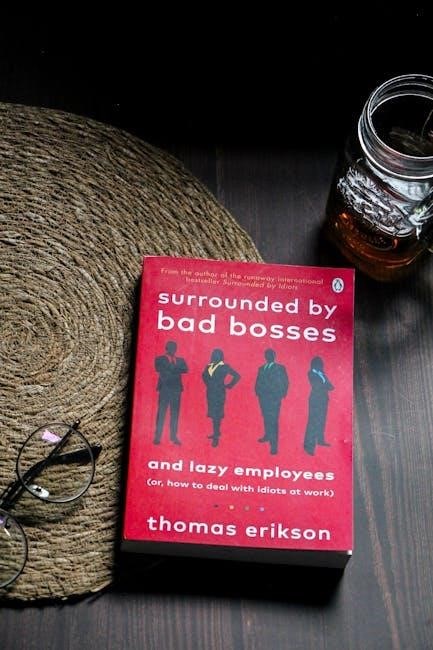
Author and Background
Art Spiegelman, born Itzhak Avraham ben Zeev, is a New York-based cartoonist, editor, and advocate for comics, best known for his Pulitzer Prize-winning graphic novel Maus․
2․1 Art Spiegelman: Biography and Contributions
Art Spiegelman, born Itzhak Avraham ben Zeev on February 15, 1948, in Stockholm, Sweden, is a renowned American cartoonist, editor, and advocate for comics․ Raised in New York, he developed an early passion for comics, contributing to underground comix and co-founding the influential Raw magazine․ Spiegelman’s unique style blends humor, satire, and historical depth, as seen in his Pulitzer Prize-winning Maus․ His work has redefined the graphic novel medium, earning him global acclaim․ Beyond Maus, Spiegelman has produced notable works like In the Shadow of No Towers, cementing his legacy as a pioneer in comics․
2․2 Spiegelman’s Other Works and Influence
Beyond Maus, Art Spiegelman has made significant contributions to comics․ He co-founded Raw, a groundbreaking magazine showcasing avant-garde comics․ His work In the Shadow of No Towers (2004) reflects on 9/11, blending personal and historical narratives․ Breakdowns (1977) and its updated edition in 2008 highlight his early experimental style․ Spiegelman’s influence extends beyond graphic novels, inspiring cartoonists globally․ His unique storytelling and visual innovation have redefined the medium, earning him academic recognition and a place in university curricula․ His work continues to challenge and expand the boundaries of comics as an art form․
Structure and Publication
Maus was serialized in Raw magazine from 1980–1991, then published as two volumes: Maus I (1986) and Maus II (1991), with a complete edition released in 1996․
3․1 Original Serialization in Raw Magazine
Maus was first serialized in Raw magazine from 1980 to 1991․ This underground comic anthology, co-founded by Art Spiegelman, provided a platform for experimental storytelling․ The serialized format allowed Spiegelman to refine his narrative and artistic style, blending personal and historical themes․ Each installment built anticipation, attracting a dedicated readership․ The magazine’s avant-garde reputation helped establish Maus as a groundbreaking work in the graphic novel medium․ This serialization laid the foundation for its later success, showcasing Spiegelman’s innovative approach to recounting the Holocaust and family dynamics through a unique visual and textual narrative․
3․2 Publication as Two Volumes: Maus I and Maus II
Maus was published as two volumes: Maus I in 1986 and Maus II in 1991․ Maus I, subtitled “My Father Bleeds History,” introduces Vladek’s Holocaust experiences․ Maus II, “And Here My Troubles Began,” explores the aftermath and Art’s relationship with his father․ The volumes use anthropomorphic animals—Jews as mice, Germans as cats—to depict the Holocaust․ This narrative style, blending past and present, received critical acclaim․ The two-volume set solidified Maus as a landmark in graphic novels, leading to its Pulitzer Prize win and lasting impact on literature and education, influencing the medium and its educational applications․
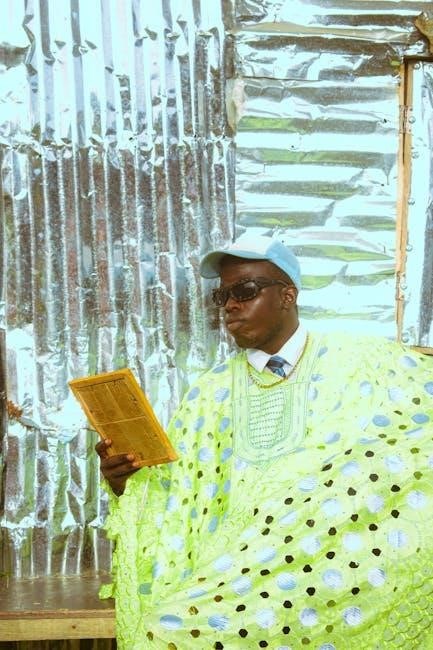
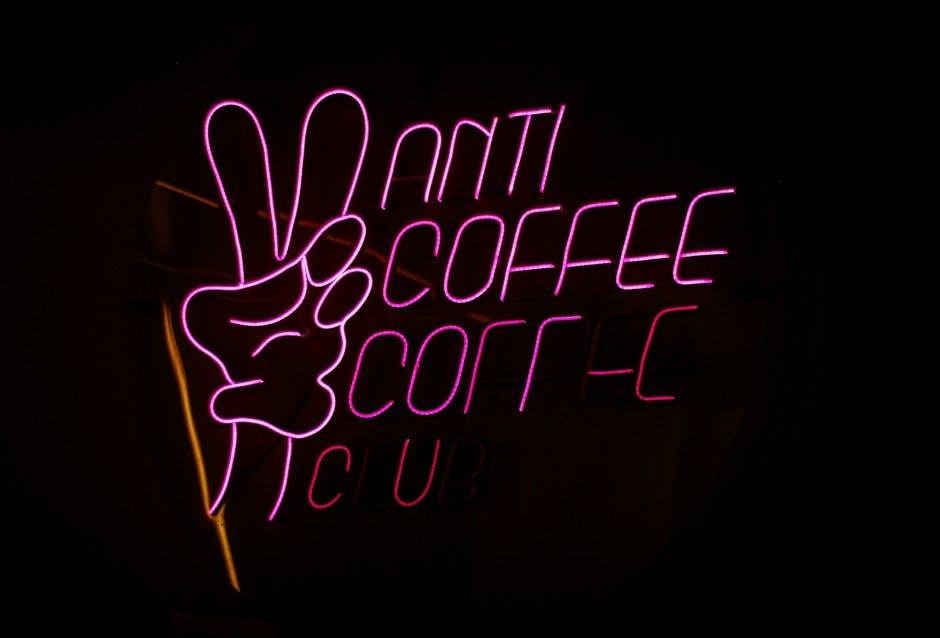
3․4 The Complete Edition of 1996
The 1996 complete edition of Maus combined both volumes into a single work, solidifying its legacy․ This edition followed the original serialization in Raw magazine and the Pulitzer Prize win, cementing Maus’s status as a landmark graphic novel․ The complete edition includes all chapters, offering a seamless narrative of Vladek’s Holocaust experiences and Art’s complex relationship with his father․ Its release marked a milestone in graphic literature, making the entire story accessible in one collection․ The 1996 edition remains widely read and studied, with its PDF version available for digital access, ensuring its reach and educational impact continue to grow․
Unique Narrative Style
Maus employs a unique narrative style with anthropomorphic animals and layered storytelling, blending Holocaust history with personal family dynamics through its austere yet powerful visual presentation․
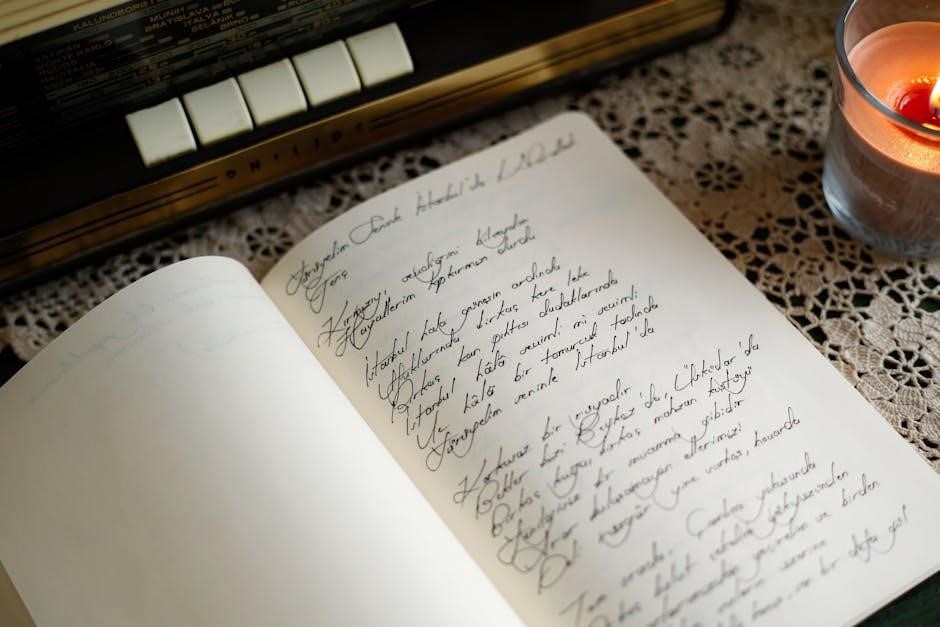
4․1 Use of Anthropomorphic Animals
In Maus, Art Spiegelman uses anthropomorphic animals to represent different races and nationalities, with Jews as mice, Germans as cats, Poles as pigs, and Americans as dogs․ This unique approach simplifies complex racial identities while emphasizing the moral clarity of the Holocaust․ The animal metaphors allow readers to connect emotionally with the characters, making the atrocities of the Holocaust more accessible and relatable․ Spiegelman’s choice of animals reflects historical stereotypes but also transcends them, focusing on the human experiences beneath․ This narrative device is central to the book’s ability to convey profound themes through a visually striking medium․
4․2 Layered Storytelling: Past and Present
Maus masterfully intertwines two timelines: Vladek’s Holocaust experiences and Art’s present-day relationship with his father․ This dual narrative structure creates emotional depth, allowing readers to witness the lasting impact of trauma․ The past unfolds through Vladek’s harrowing stories of survival, while the present reveals the strained father-son dynamic․ Spiegelman’s layered storytelling bridges generations, exploring themes of identity, guilt, and memory․ The juxtaposition of past and present underscores the Holocaust’s enduring legacy, making the narrative both historically poignant and deeply personal․ This innovative approach enhances the book’s emotional resonance and intellectual complexity․

Themes and Symbolism
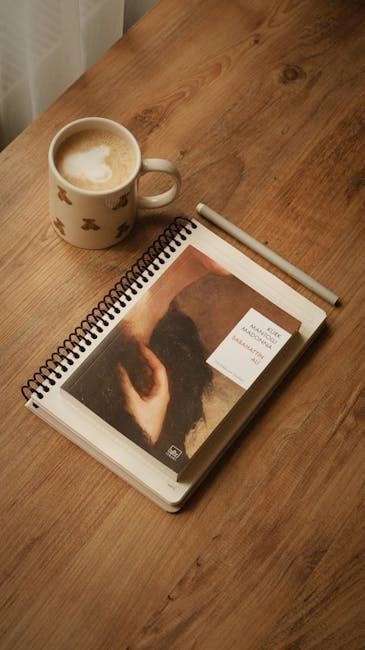
Maus explores the Holocaust, identity, and generational trauma through symbolic animal representations, with Jews as mice and Nazis as cats, reflecting racial and national divisions․ The graphic novel delves into the psychological and emotional toll of history on individuals and families, using layered storytelling to convey complex themes․ The symbolism underscores the dehumanization of the Holocaust while highlighting the resilience and humanity of its survivors․ This blend of history and metaphor creates a profound narrative about memory, guilt, and survival․ The interplay of past and present enriches the story’s emotional depth and universal relevance․ The use of animals as symbols allows for a nuanced exploration of race, nationality, and identity, making the themes accessible and deeply resonant․ The graphic novel’s symbolism is both haunting and thought-provoking, leaving a lasting impact on readers․ The themes of trauma, family, and identity are intertwined with the symbolic representations, creating a rich and multifaceted narrative․ The Holocaust’s atrocities are portrayed through the lens of personal experience, making the symbolism both powerful and poignant․ The graphic novel’s ability to balance historical facts with emotional depth is a testament to its enduring significance․ The themes and symbolism in Maus continue to inspire reflection and discussion, ensuring its place as a seminal work in Holocaust literature․ The interplay of themes and symbols creates a narrative that is both deeply personal and universally relatable, making Maus a masterpiece of contemporary literature․ The graphic novel’s exploration of identity, race, and nationality through symbolism adds layers of complexity to its already compelling story․ The themes of survival, guilt, and memory are woven together with symbolic elements, creating a narrative that is both haunting and hopeful․ The graphic novel’s use of symbolism to explore the Holocaust’s impact on individuals and families is both innovative and deeply moving․ The interplay of themes and symbols in Maus ensures that its message remains relevant and impactful, continuing to resonate with readers today․ The graphic novel’s ability to convey complex themes through symbolism is a key factor in its widespread acclaim and enduring influence․ The themes of identity, race, and nationality are central to the narrative, and the symbolic representations enhance their exploration․ The graphic novel’s use of animals as symbols allows for a nuanced examination of the Holocaust’s complexities, making the themes more accessible and engaging․ The interplay of past and present in the narrative is reinforced by the symbolic elements, creating a rich and multifaceted story․ The themes of trauma, family, and identity are deeply intertwined with the symbolic representations, adding depth and complexity to the narrative․ The graphic novel’s exploration of the Holocaust through symbolism is both powerful and poignant, leaving a lasting impact on readers․ The interplay of themes and symbols in Maus ensures that its message remains relevant and impactful, continuing to resonate with readers today․ The graphic novel’s ability to convey complex themes through symbolism is a key factor in its widespread acclaim and enduring influence․ The themes of identity, race, and nationality are central to the narrative, and the symbolic representations enhance their exploration․ The graphic novel’s use of animals as symbols allows for a nuanced examination of the Holocaust’s complexities, making the themes more accessible and engaging․ The interplay of past and present in the narrative is reinforced by the symbolic elements, creating a rich and multifaceted story․ The themes of trauma, family, and identity are deeply intertwined with the symbolic representations, adding depth and complexity to the narrative․ The graphic novel’s exploration of the Holocaust through symbolism is both powerful and poignant, leaving a lasting impact on readers․ The interplay of themes and symbols in Maus ensures that its message remains relevant and impactful, continuing to resonate with readers today․ The graphic novel’s ability to convey complex themes through symbolism is a key factor in its widespread acclaim and enduring influence․ The themes of identity, race, and nationality are central to the narrative, and the symbolic representations enhance their exploration․ The graphic novel’s use of animals as symbols allows for a nuanced examination of the Holocaust’s complexities, making the themes more accessible and engaging․ The interplay of past and present in the narrative is reinforced by the symbolic elements, creating a rich and multifaceted story․ The themes of trauma, family, and identity are deeply intertwined with the symbolic representations, adding depth and complexity to the narrative․ The graphic novel’s exploration of the Holocaust through symbolism is both powerful and poignant, leaving a lasting impact on readers․ The interplay of themes and symbols in Maus ensures that its message remains relevant and impactful, continuing to resonate with readers today․ The graphic novel’s ability to convey complex themes through symbolism is a key factor in its widespread acclaim and enduring influence․ The themes of identity, race, and nationality are central to the narrative, and the symbolic representations enhance their exploration․ The graphic novel’s use of animals as symbols allows for a nuanced examination of the Holocaust’s complexities, making the themes more accessible and engaging․ The interplay of past and present in the narrative is reinforced by the symbolic elements, creating a rich and multifaceted story․ The themes of trauma, family, and identity are deeply intertwined with the symbolic representations, adding depth and complexity to the narrative․ The graphic novel’s exploration of the Holocaust through symbolism is both powerful and poignant, leaving a lasting impact on readers․ The interplay of themes and symbols in Maus ensures that its message remains relevant and impactful, continuing to resonate with readers today․ The graphic novel’s ability to convey complex themes through symbolism is a key factor in its widespread acclaim and enduring influence․ The themes of identity, race, and nationality are central to the narrative, and the symbolic representations enhance their exploration․ The graphic novel’s use of animals as symbols allows for a nuanced examination of the Holocaust’s complexities, making the themes more accessible and engaging․ The interplay of past and present in the narrative is reinforced by the symbolic elements, creating a rich and multifaceted story․ The themes of trauma, family, and identity are deeply intertwined with the symbolic representations, adding depth and complexity to the narrative․ The graphic novel’s exploration of the Holocaust through symbolism is both powerful and poignant, leaving a lasting impact on readers․ The interplay of themes and symbols in Maus ensures that its message remains relevant and impactful, continuing to resonate with readers today․ The graphic novel’s ability to convey complex themes through symbolism is a key factor in its widespread acclaim and enduring influence․ The themes of identity, race, and nationality are central to the narrative, and the symbolic representations enhance their exploration․ The graphic novel’s use of animals as symbols allows for a nuanced examination of the Holocaust’s complexities, making the themes more accessible and engaging․ The interplay of past and present in the narrative is reinforced by the symbolic elements, creating a rich and multifaceted story․ The themes of trauma, family, and identity are deeply intertwined with the symbolic representations, adding depth and complexity to the narrative․ The graphic novel’s exploration of the Holocaust through symbolism is both powerful and poignant, leaving a lasting impact on readers․ The interplay of themes and symbols in Maus ensures that its message remains relevant and impactful, continuing to resonate with readers today․ The graphic novel’s ability to convey complex themes through symbolism is a key factor in its widespread acclaim and enduring influence․ The themes of identity, race, and nationality are central to the narrative, and the symbolic representations enhance their exploration․ The graphic novel’s use of animals as symbols allows for a nuanced examination of the Holocaust’s complexities, making the themes more accessible and engaging․ The interplay of past and present in the narrative is reinforced by the symbolic elements, creating a rich and multifaceted story․ The themes of trauma, family, and identity are deeply intertwined with the symbolic representations, adding depth and complexity to the narrative․ The graphic novel’s exploration of the Holocaust through symbolism is both powerful and poignant, leaving a lasting impact on readers․ The interplay of themes
5․1 The Holocaust and Its Impact
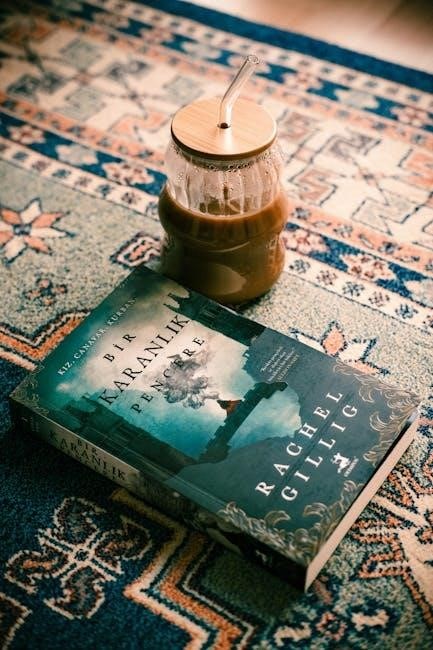
Maus vividly portrays the Holocaust’s horrors through Vladek Spiegelman’s experiences, detailing life in concentration camps, ghettos, and the constant struggle for survival․ The graphic novel underscores the emotional and psychological toll on survivors, such as guilt, loss, and fractured identities․ By depicting Jews as mice and Nazis as cats, Spiegelman emphasizes the dehumanization and racial hierarchy of the Holocaust․ The narrative also explores the intergenerational trauma, showing how the Holocaust shaped Vladek’s worldview and strained his relationship with his son, Artie․ The Holocaust’s impact is not just historical but deeply personal, resonating through the family’s story․ The graphic novel’s unflinching portrayal of atrocities and survival serves as a powerful reminder of the Holocaust’s lasting effects on individuals and society․ Through its layered storytelling, Maus humanizes the victims, ensuring their stories are not forgotten․ The Holocaust’s legacy is central to the narrative, highlighting its enduring relevance and the need for remembrance․ The graphic novel’s ability to balance historical facts with personal narratives makes it a poignant exploration of the Holocaust’s impact․ The themes of survival, guilt, and memory are deeply intertwined with the Holocaust’s atrocities, creating a narrative that is both haunting and thought-provoking․ The graphic novel’s portrayal of the Holocaust through animal symbolism adds depth to the exploration of its impact, making the story accessible and emotionally resonant․ The Holocaust’s influence on Vladek’s life and his relationship with Artie underscores the long-lasting effects of trauma․ The graphic novel’s unflinching depiction of the Holocaust ensures that its lessons are not forgotten, serving as a powerful educational tool․ The interplay of historical events and personal experiences in Maus creates a narrative that is both deeply personal and universally relevant․ The Holocaust’s impact is not just a historical event but a lived experience that continues to shape lives, as depicted in Maus․ The graphic novel’s ability to convey the Holocaust’s complexities through symbolism and storytelling ensures its enduring significance․ The Holocaust’s atrocities and the resilience of its survivors are central to the narrative, making Maus a vital work in understanding this dark chapter of history․ The graphic novel’s exploration of the Holocaust’s impact on individuals and families is both powerful and poignant, leaving a lasting impression on readers․ The interplay of historical context and personal narrative in Maus ensures that the Holocaust’s lessons are remembered and honored․ The graphic novel’s ability to balance historical accuracy with emotional depth makes it a compelling exploration of the Holocaust’s impact․ The themes of survival, guilt, and memory in Maus are deeply connected to the Holocaust’s atrocities, creating a narrative that is both haunting and thought-provoking․ The graphic novel’s portrayal of the Holocaust through animal symbolism adds depth to the exploration of its impact, making the story accessible and emotionally resonant․ The Holocaust’s influence on Vladek’s life and his relationship with Artie underscores the long-lasting effects of trauma․ The graphic novel’s unflinching depiction of the Holocaust ensures that its lessons are not forgotten, serving as a powerful educational tool․ The interplay of historical events and personal experiences in Maus creates a narrative that is both deeply personal and universally relevant․ The Holocaust’s impact is not just a historical event but a lived experience that continues to shape lives, as depicted in Maus․ The graphic novel’s ability to convey the Holocaust’s complexities through symbolism and storytelling ensures its enduring significance․ The Holocaust’s atrocities and the resilience of its survivors are central to the narrative, making Maus a vital work in understanding this dark chapter of history․ The graphic novel’s exploration of the Holocaust’s impact on individuals and families is both powerful and poignant, leaving a lasting impression on readers․ The interplay of historical context and personal narrative in Maus ensures that the Holocaust’s lessons are remembered and honored․ The graphic novel’s ability to balance historical accuracy with emotional depth makes it a compelling exploration of the Holocaust’s impact․ The themes of survival, guilt, and memory in Maus are deeply connected to the Holocaust’s atrocities, creating a narrative that is both haunting and thought-provoking․ The graphic novel’s portrayal of the Holocaust through animal symbolism adds depth to the exploration of its impact, making the story accessible and emotionally resonant․ The Holocaust’s influence on Vladek’s life and his relationship with Artie underscores the long-lasting effects of trauma․ The graphic novel’s unflinching depiction of the Holocaust ensures that its lessons are not forgotten, serving as a powerful educational tool․ The interplay of historical events and personal experiences in Maus creates a narrative that is both deeply personal and universally relevant․ The Holocaust’s impact is not just a historical event but a lived experience that continues to shape lives, as depicted in Maus․ The graphic novel’s ability to convey the Holocaust’s complexities through symbolism and storytelling ensures its enduring significance․ The Holocaust’s atrocities and the resilience of its survivors are central to the narrative, making Maus a vital work in understanding this dark chapter of history․ The graphic novel’s exploration of the Holocaust’s impact on individuals and families is both powerful and poignant, leaving a lasting impression on readers․ The interplay of historical context and personal narrative in Maus ensures that the Holocaust’s lessons are remembered and honored․ The graphic novel’s ability to balance historical accuracy with emotional depth makes it a compelling exploration of the Holocaust’s impact․ The themes of survival, guilt, and memory in Maus are deeply connected to the Holocaust’s atrocities, creating a narrative that is both haunting and thought-provoking․ The graphic novel’s portrayal of the Holocaust through animal symbolism adds depth to the exploration of its impact, making the story accessible and emotionally resonant․ The Holocaust’s influence on Vladek’s life and his relationship with Artie underscores the long-lasting effects of trauma․ The graphic novel’s unflinching depiction of the Holocaust ensures that its lessons are not forgotten, serving as a powerful educational tool․ The interplay of historical events and personal experiences in Maus creates a narrative that is both deeply personal and universally relevant․ The Holocaust’s impact is not just a historical event but a lived experience that continues to shape lives, as depicted in Maus․ The graphic novel’s ability to convey the Holocaust’s complexities through symbolism and storytelling ensures its enduring significance․ The Holocaust’s atrocities and the resilience of its survivors are central to the narrative, making Maus a vital work in understanding this dark chapter of history․ The graphic novel’s exploration of the Holocaust’s impact on individuals and families is both powerful and poignant, leaving a lasting impression on readers․ The interplay of historical context and personal narrative in Maus ensures that the Holocaust’s lessons are remembered and honored․ The graphic novel’s ability to balance historical accuracy with emotional depth makes it a compelling exploration of the Holocaust’s impact․ The themes of survival, guilt, and memory in Maus are deeply connected to the Holocaust’s atrocities, creating a narrative that is both haunting and thought-provoking․ The graphic novel’s portrayal of the Holocaust through animal symbolism adds depth to the exploration of its impact, making the story accessible and emotionally resonant․ The Holocaust’s influence on Vladek’s life and his relationship with Artie underscores the long-lasting effects of trauma․ The graphic novel’s unflinching depiction of the Holocaust ensures that its lessons are not forgotten, serving as a powerful educational tool․ The interplay of historical events and personal experiences in Maus creates a narrative that is both deeply personal and universally relevant․ The Holocaust’s impact is not just a historical event but a lived experience that continues to shape lives, as depicted in Maus․ The graphic novel’s ability to convey the Holocaust’s complexities through symbolism and storytelling ensures its enduring significance․ The Holocaust’s atrocities and the resilience of its survivors are central to the narrative, making Maus a vital work in understanding this dark chapter of history․ The graphic novel’s exploration of the Holocaust’s impact on individuals and families is both powerful and poignant, leaving a lasting impression on readers․ The interplay of historical context and personal narrative in Maus ensures that the Holocaust’s lessons are remembered and honored․ The graphic novel’s ability to
Maus, a Pulitzer Prize-winning graphic novel, leaves a lasting impact with its unique storytelling, exploring the Holocaust and family dynamics․ Its legacy endures as a vital educational tool and historical remembrance․












